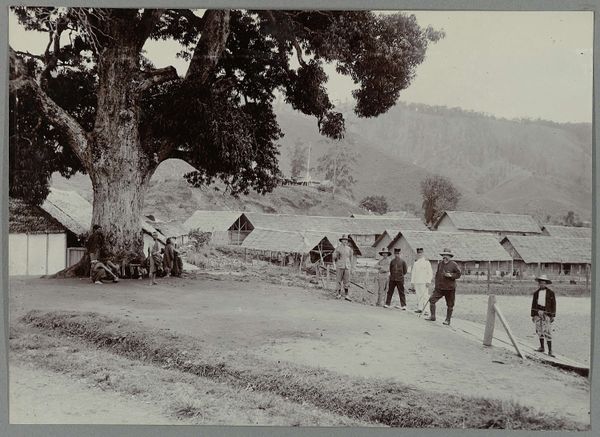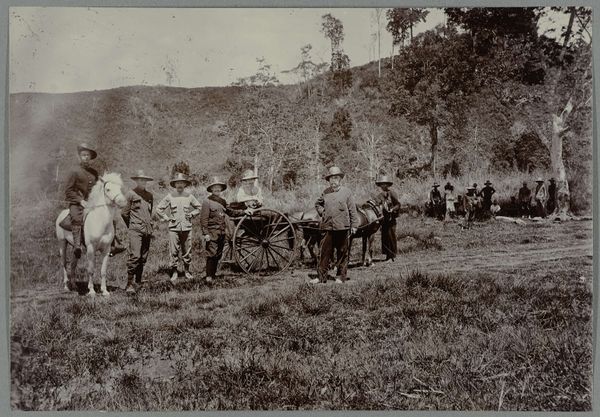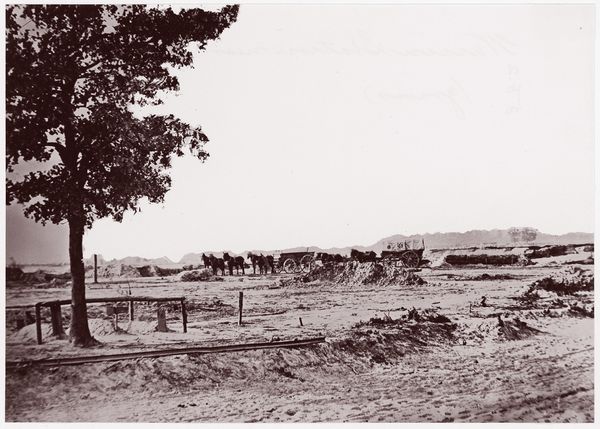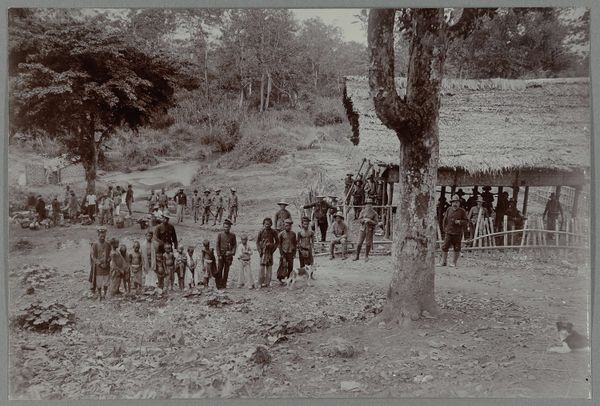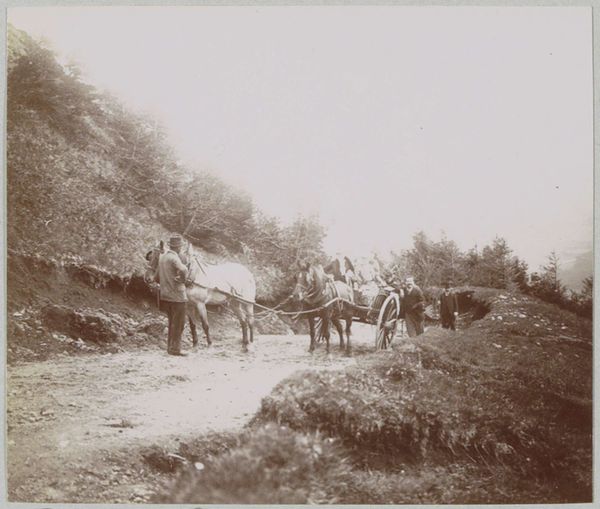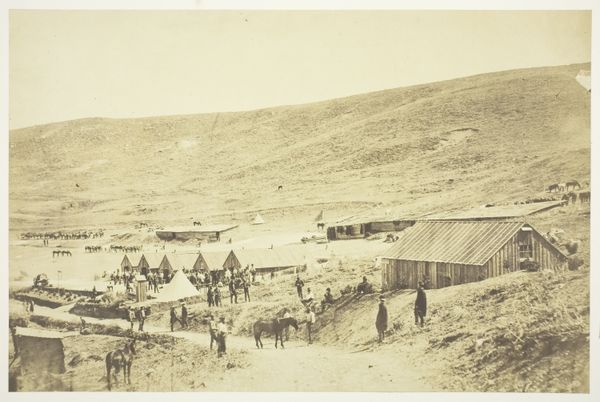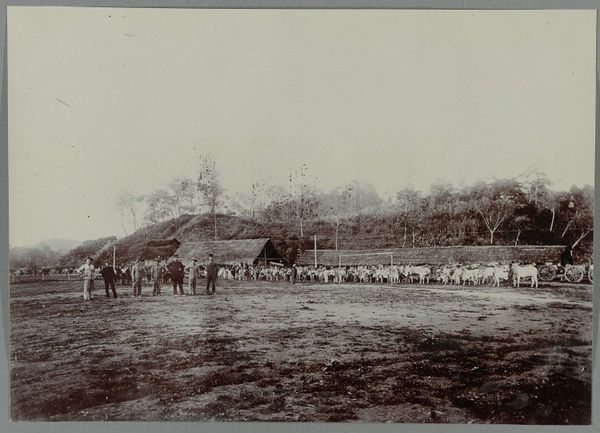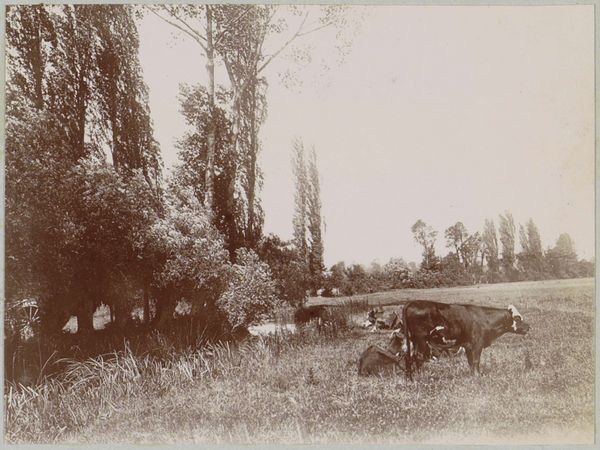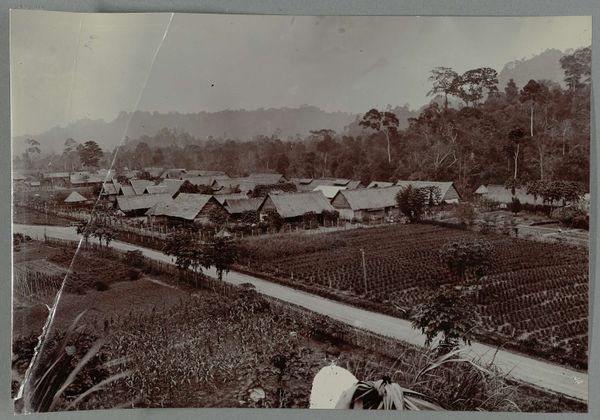
photography, gelatin-silver-print
#
landscape
#
photography
#
orientalism
#
gelatin-silver-print
#
genre-painting
Dimensions: height 138 mm, width 200 mm
Copyright: Rijks Museum: Open Domain
Editor: This gelatin-silver print, "Paardenmarkt te Takinguen," or "Horse Market in Takinguen," captured between 1903 and 1913, presents a striking image of a marketplace. What jumps out at me is how the figures, both human and animal, are arranged, almost staged, against the backdrop of what looks like a bustling town. How do you interpret the photograph, especially considering its historical context? Curator: It is vital to see this image within the broader context of orientalism and colonial photography. Look at how the figures are posed, almost like ethnographic subjects. This image isn't just capturing a horse market; it is also constructing a particular view of the "Orient" for a Western audience, framing it through a lens of exoticism and perhaps even subtle domination. Editor: So you're saying that the photograph itself becomes a form of cultural commentary? Curator: Precisely. Think about the power dynamics at play. Who is holding the camera? Who is being photographed? The photographer, likely a Westerner, wields the power to represent this scene, shaping perceptions and reinforcing colonial narratives. The local people become objects of the gaze, their agency minimized. Editor: I see what you mean. The image isn’t just a neutral depiction; it actively participates in a historical narrative of power and representation. Is it possible to look beyond this colonial gaze and find other perspectives? Curator: That's the challenge. We can try to understand the subjects on their own terms, researching their culture and history. But we must acknowledge the inherent biases embedded in the photograph. Even our attempt to “see beyond” is mediated by our own contemporary understanding. Editor: This photograph gives us more to think about than just horses. Thank you for bringing a critical eye to its history. Curator: My pleasure. Thinking critically is exactly what is needed.
Comments
No comments
Be the first to comment and join the conversation on the ultimate creative platform.
